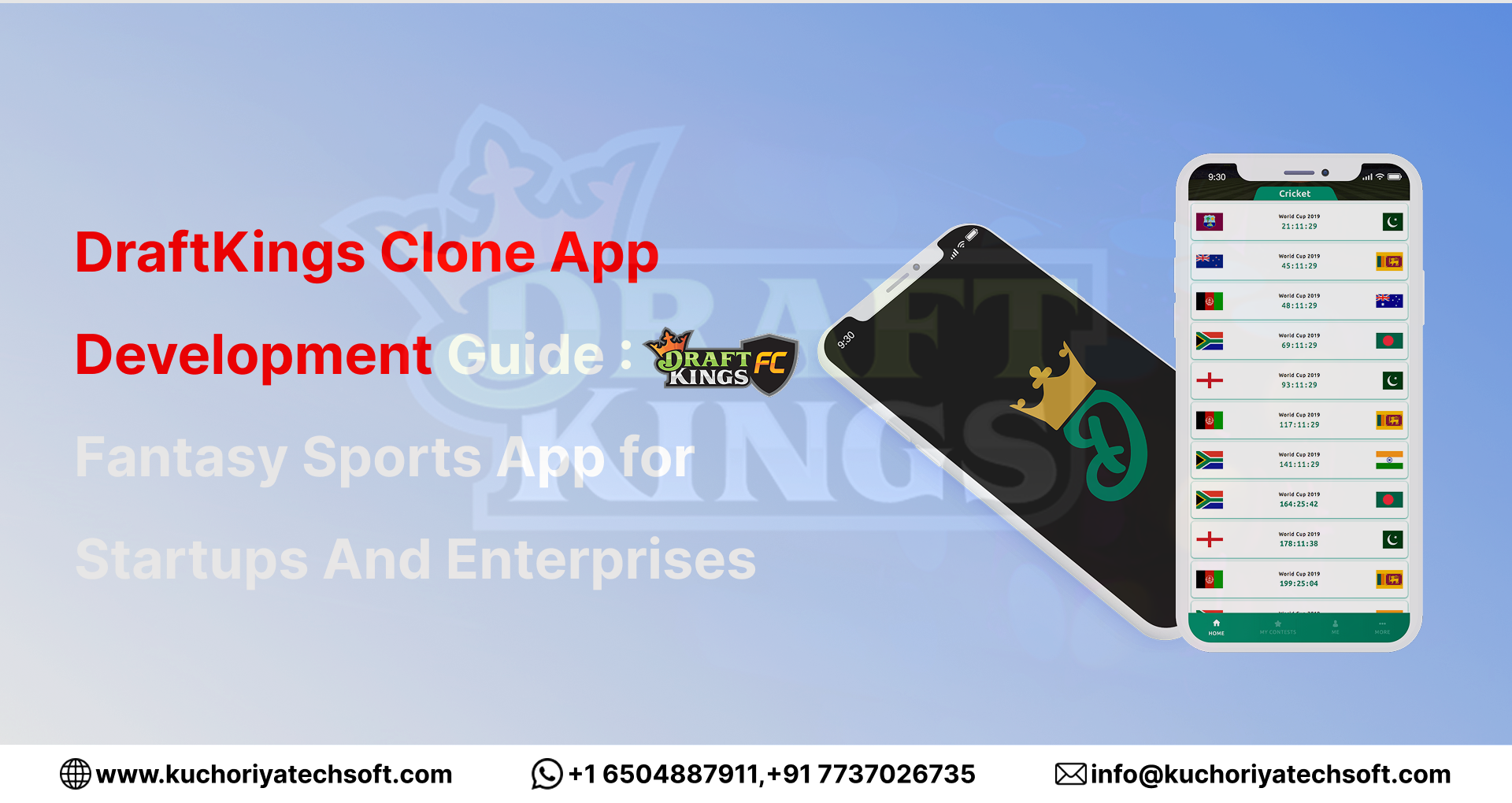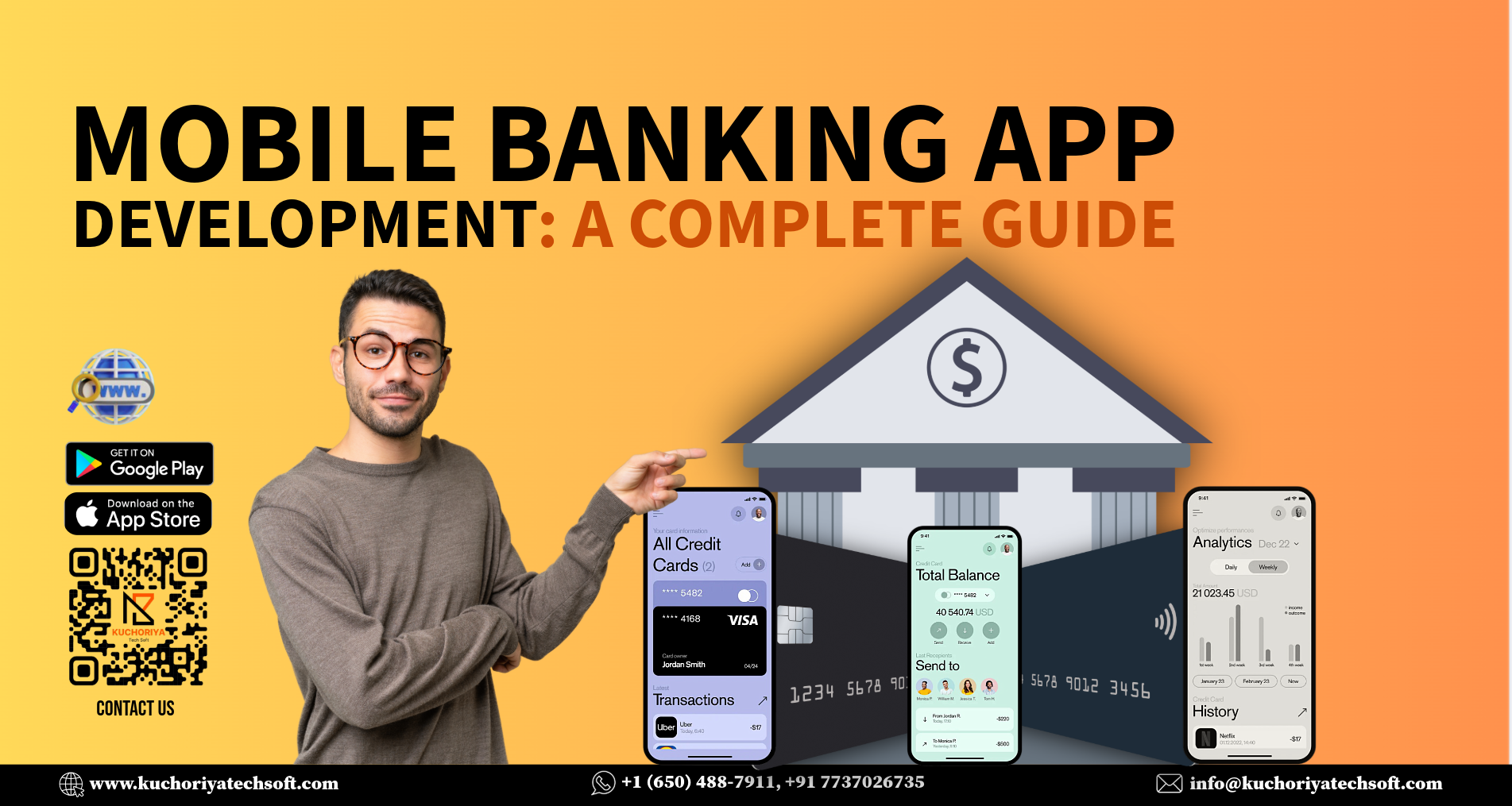What are the key steps involved in developing an e-commerce marketplace platform in Australia?
E-commerce has emerged as the mainstay of retail in Australia's rapidly developing digital landscape, offering customers easy access to a vast array of goods and services. Strong and scalable e-commerce platforms are in greater demand as more companies adopt the online marketplace model. You've come to the right spot if you want to build your Australian e-commerce marketplace platform and take advantage of this trend.
The development of e-commerce marketplace platforms is our area of expertise at Kuchoriya TechSoft. We use state-of-the-art tools and industry best practices to deliver creative solutions that propel business success. Developing an e-commerce marketplace platform in Australia involves a number of important steps, which we'll walk you through in this in-depth guide to make sure you have the skills and knowledge necessary to succeed in the 2023–24 digital marketplace environment.
It's critical to comprehend the current status of Australia's e-commerce market landscape before beginning the development process. The Australian e-commerce market offers substantial opportunities for businesses of all sizes, as an increasing number of consumers choose the convenience of online shopping. There is a lot of space for innovation and expansion in the Australian e-commerce market, from specialized verticals to broad categories like fashion, electronics, and home goods.
Why Choose Kuchoriya TechSoft for E-commerce Marketplace Development?
Delivering best-in-class e-commerce marketplace solutions that enable companies to thrive in the cutthroat Australian market is our mission at Kuchoriya TechSoft. We're honored to have been named the best e-commerce marketplace platform development company for 2023–2024 thanks to our wealth of experience, knowledge, and commitment to excellence. When you collaborate with us, you can anticipate:
- Customized solutions tailored to your unique business requirements and objectives
- Scalable and flexible platforms that grow with your business and adapt to changing market dynamics
- Seamless integration with third-party tools, payment gateways, and shipping providers for a streamlined user experience
- Comprehensive support and maintenance to ensure your platform performs optimally and delivers maximum value to your customers
1. Define Your Business Model and Niche
Identifying your niche and business model is the first stage in creating an e-commerce marketplace platform. Establish your target market and customer demographics, decide whether to concentrate on a particular vertical or serve a larger clientele. To set your platform apart and position it for success in the Australian market, take into account elements like competition, market demand, and unique selling propositions.
2. Choose the Right Technology Stack
For your e-commerce marketplace platform to succeed, choosing the appropriate tech stack is essential. The underlying technologies you choose for your platform should take into account aspects like scalability, flexibility, security, and ease of customization. Magento, Shopify, WooCommerce, and custom-built solutions with PHP, Python, or Node.js are popular options for developing e-commerce marketplaces.
3. Design an Intuitive User Experience
A platform for online marketplaces must prioritize user experience if it is to succeed. Easily navigate, search for products, and complete transactions for both buyers and sellers by creating an intuitive and user-friendly interface. Ensure that your users have a smooth and enjoyable shopping experience by keeping an eye on things like mobile responsiveness, page load times, and checkout procedures.
4. Implement Robust Marketplace Features
In order to satisfy the demands of both buyers and sellers, your e-commerce marketplace platform should have a large selection of features and functionalities. Product listings, search and filtering capabilities, safe payment gateways, order management tools, client testimonials and ratings, seller analytics, and marketing tools are important features to take into account. Moreover, promotional features and customizable storefronts can draw and keep sellers on your platform.
5. Ensure Secure Payment Processing
E-commerce requires a high level of security, particularly when handling sensitive customer data and processing payments. For secure payment processing and to guard against fraud and unauthorized access to customer data, implement strong encryption protocols, SSL certificates, and PCI-DSS (Payment Card Industry Data Security Standard) compliance.
6. Integrate with Third-Party Services
An e-commerce marketplace platform can benefit from integrating with third-party services and APIs to improve its functionality and usability. Systems for managing inventories, shipping companies, CRM programs, and marketing automation tools are a few examples of this. Errors are reduced, productivity is increased, and the user experience is improved when these services are integrated seamlessly.
7. Launch, Test, and Iterate
Now that your platform for an e-commerce marketplace has been developed, it's time to make it public. To find and fix any bugs, mistakes, or usability problems, thoroughly test your product on a variety of hardware, operating systems, and browsers. Ask early adopters for input, then make changes to your platform in response to their ideas and observations. To make sure your platform stays competitive and offers your users the most value, it is essential to conduct ongoing testing, monitoring, and optimization.
Check out the newest advancements in the eCommerce Marketplace:
Technology: Node.js, React.js, JavaScript, Bootstrap, HTML5, CSS3, Mongodb
Location: USA
Client: www.chairish.com
Technology: Angular.js, ASP.Net, DevOps, Dynamodb, AWS
Location: USA
Client: www.grailed.com
Technology: Wue.js, Typescript, Python, MySQL, AWS Cloud,
Location: UK
Client: www.catawiki.com/en
Technology: Magento, MySQL, HTML5, CSS3, Bootstrep5, AWS, Zoho, CRM
Location: UK
Client: www.farfetch.com/in/
Conclusion: Empowering E-commerce Success with Kuchoriya TechSoft
Success in Australia's ever-changing e-commerce environment depends on having a strong and expandable marketplace platform. Working together with Kuchoriya TechSoft, the leading e-commerce platform development company in 2023–2024, you can take advantage of our knowledge and experience to create a solution that is specifically tailored to your company's goals and needs.
When will you be prepared to advance your online store? To find out more about how Kuchoriya TechSoft can assist you in creating a state-of-the-art marketplace platform that propels expansion, creativity, and success in the Australian market, get in touch with us right now.
For more information, click here www.kuchoriyatechsoft.com
HIRE A TOP SOFTWARE DEVELOPMENT COMPANY
We are all over the world
United State
9765 keystone court, Clarence, NY 14031 , USA, +1 (650) 488-7911
Canada
1100 Caven St., Suite PH11, Mississauga, ON L5G 4N3 Canada , +1 (416) 726-4662, +1 (650) 488-7911
Brazil
Bispo César da Corso Filho, 1266, San Carlos, São Paulo, Boa Vista, Brazil, 13575-331
South Africa
12 IbisWay, Sunnydale Fish Hoek 7985 Western Cape, South Africa, +27824507091
Spain
The Fir Tree 119 El Olmillo Residential Area Loranca de Tajuña 19141 Guadalajara, Spain
UAE
Building A2 DDP - Dubai Silicon Oasis - Dubai - United Arab Emirates
Italy
Viale dell'Esperanto, 71, Formia, Italy, Lazio IT
Singapore
01-08 50 Ubi Cres, Ubi TechPark, Singapore, 408568
Hong Kong
Tower 2, Silvercord, Rm 907, 9F, 30 Canton Rd, Tsim Sha Tsui, Hong Kong
Australia
Unit 14G, 3 darling point road, darling point, Sydney, NSW, Australia, 2027
India
C-15, 1st floor, Mahalaxmi Marg, Behind World Trade Park, Malviya Nagar, Jaipur, Rajasthan - 302017





















